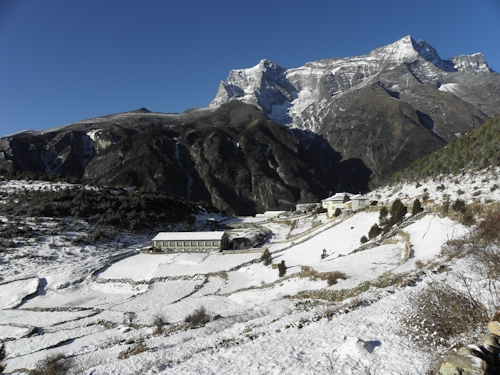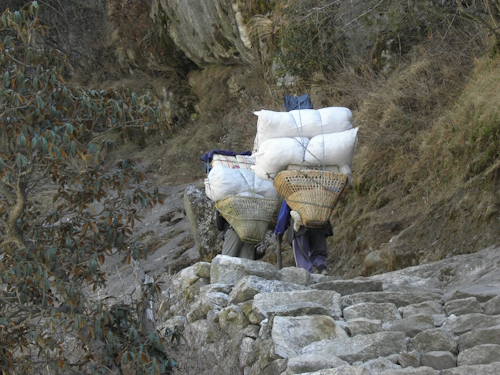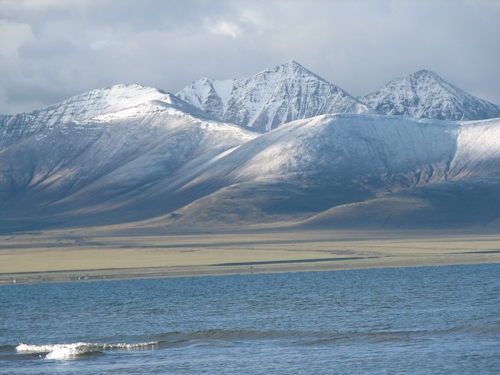Blog Connections
Himalaya
Our Himalaya connection so far only had seven entries. None of them had any rationale, and the connection itself had no definition. As in my head it was time to travel to the Himalaya again (I still have so much ‘to do’ there), I decided to work on the upgrade of this connection for a bit and see whether there is potential for more Himalayan WHS in the future.

The definition
Everyone has an image in his/her mind of what and where the Himalaya are, but providing a solid definition isn’t that straightforward. It’s not one mountain range but a series of them, and it borders even more mountain ranges with overlapping values.
I eventually came up with:
WHS located in the Himalaya proper, the rugged arc between the Tibetan Plateau and the Ganges Plain. Including sites that are in its foothills or where the site lays claim to specific Himalayan features for its OUV.
This implicates:
- This scope excludes the Karakoram and Hindu Kush ranges, which it borders to the northwest (they could have their own connections in the future). Also, the Tibetan Plateau itself is not part of the Himalaya – so Qinghai Hoh Xil for example isn’t included. A helpful map can be found here.
- It includes sites in transition zones that 'self-identify' as Himalayan, as in deriving value from it by the landscape, the flow of a river, etc. This must be clear from the nomination dossier or the AB evaluation.
Current Himalayan WHS
To the 7 that we had already, I added:
- Mount Emei: “This is due to its transitional location at the edge of the Sichuan basin and the eastern Himalayan highlands”
- Manas Wildlife Sanctuary: “Manas is located at the foothills of the Eastern Himalayas”, “it is intricately linked to the Himalayas, including through the Manas River”
- Mountain Railways of India: “the Darjeeling Himalayan Railway located in the foothills of the Himalayas in West Bengal ... and the Kalka Shimla Railway located in the Himalayan foothills of Himachal Pradesh”
- Chitwan NP: “Nestled at the foot of the Himalayas”
- Sichuan Giant Panda Sanctuaries - Wolong: “a mixing zone between the subtropical flora of East Asia and the temperate flora of the Himalayan/ Qingzang Plateau” (AB ev)

Potential
On the Tentative Lists, we find these strong candidates:
- Cold Desert Cultural Landscape (India): includes parts of Ladakh and Spiti, and is “a trans-Himalayan marginal plateau land and edge region between the Greater Himalayas of India and the main Tibetan Plateau, which is an unparalleled location both physically and culturally.”
- Yalong Tibet (China): includes the middle reaches of the Yalong River, which "cuts through the Himalayas", and Himalayan geological structures.
- Scenic and historic area of Sacred Mountains and Lakes (China): Mt Kailash, “Nahumanni peak is the most typical ‘detachment’ of the Tibetan Plateau, which is identified as the key point for geologists to study the uplift of the Himalayas. It is also one of the largest concentrated areas of the Himalayan modern glaciers in the southwest of Tibet” “also one of the main corridors for the migration of rare wild animals such as Tibetan antelope and wild yak to the Tibetan Himalayas.”
- Neora Valley NP (India): “a compact patch of virgin forest, rich in biodiversity located in the Eastern Himalayas”
- Namdapha NP (India) at the edge of the Eastern Himalaya.
And we could also consider all TWHS of Nepal (which are all cultural by the way), notably Mustang and Lo Manthang. And all TWHS of Bhutan, notably the Bumdeling Wildlife Sanctuary and Jigme Dorji NP.
In our Missing exercises, we came up with Mount Kailash and Tashilunpo Monastery in Shigatse (both Tibet).

A study by the International Centre for Integrated Mountain Development (ICIMOD) in 2021 identified further potential. They used a wider scope, also including the Hindu Kush and extending the area from Afghanistan to Myanmar. But within our definition, they firstly suggest focusing on transboundary extensions: the Chinese part of the Everest region should be covered as well, as “Sagarmatha National Park (Nepal) encompasses part of the world’s highest mountain, a partial coverage following political borders rather than a conservation rationale”. The same rationale counts for Manas with an extension into Bhutan's Royal Manas NP.
As thematic ‘gaps’ they identified:
- The cold winter deserts;
- both the Eastern and the Western Himalayan Broadleaf and Conifer Forests;
- the Eastern Himalayan Alpine Shrub and Meadows (adjacent to the above-mentioned Eastern Himalayan Broadleaf and Conifer Forests);
- Rivers – “If any meaningful representations of untamed rivers of the world’s highest mountain ranges and their biodiversity are to remain, effective conservation approaches are needed now, including under the Convention”.
Which places in the Himalaya do you rate highly and would you put forward for a nomination?
Els - 4 June 2023
Comments
Dennis 6 June 2023
I don't know about Chitwan. You very definitely descend a long ways down from the mountains when driving there from Kathmandu. It's pretty much a lowland park, although you can see mountains in the distance.